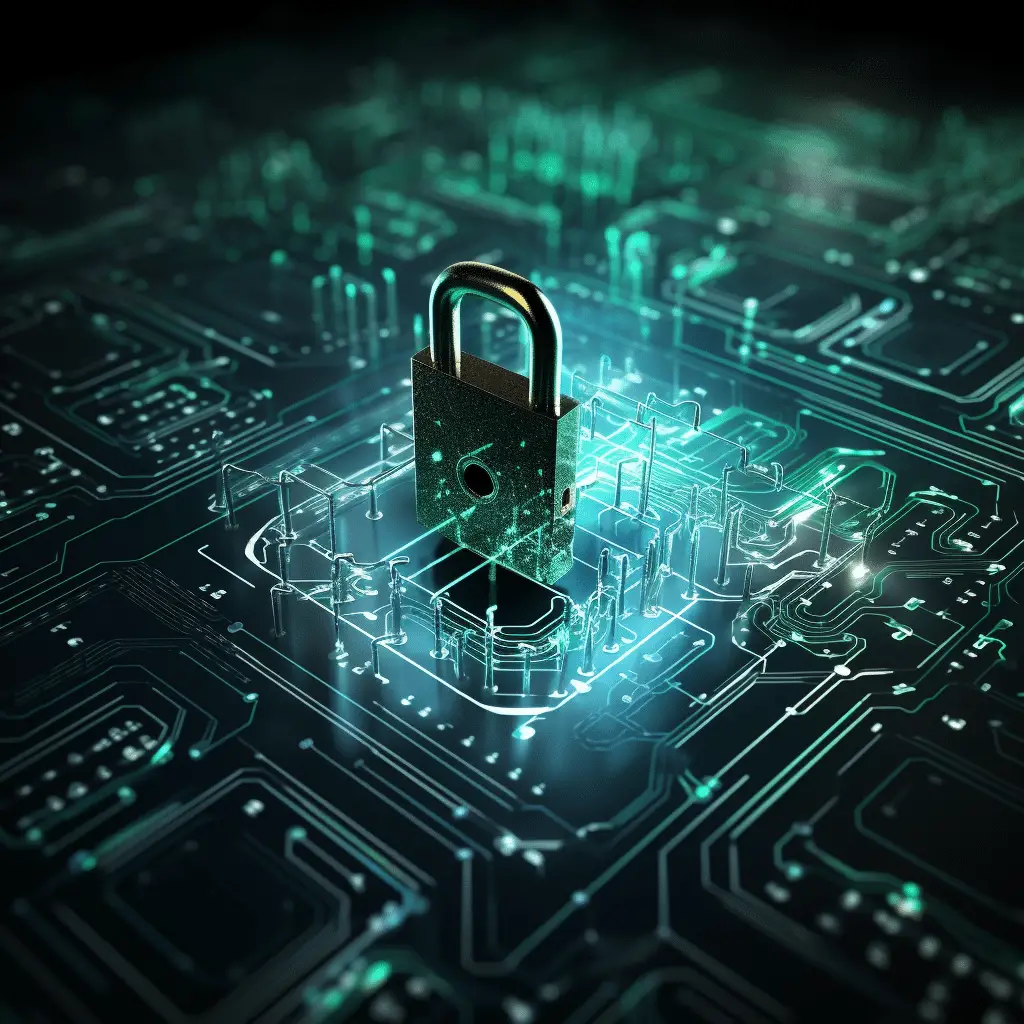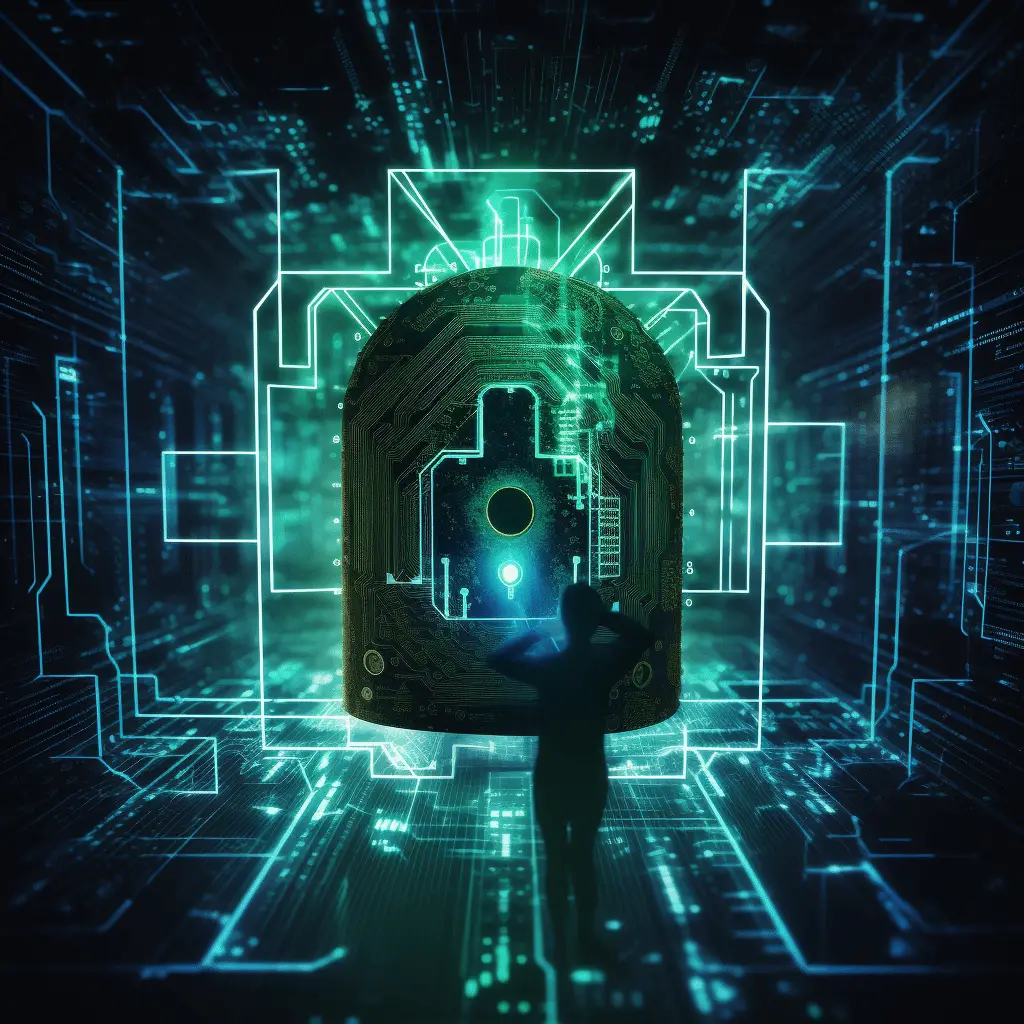When it comes to protecting digital assets, cybersecurity and access control play a crucial role in ensuring the safety and integrity of networks and systems. The increasing reliance on technology in various industries has made digital security more important than ever before. In this article, we will explore the intersection of cybersecurity and access control, highlighting their significance in safeguarding sensitive information and preventing unauthorized access.

Key Takeaways:
- Cybersecurity and access control are vital for protecting digital assets and ensuring network protection.
- Proactive measures are necessary to address the evolving challenges and threats faced by educational institutions and other organizations.
- The Cybersecurity and Infrastructure Security Agency (CISA) has developed a strategic plan to enhance threat detection, guide cybersecurity investments, and secure future technologies.
- Addressing immediate threats, hardening the terrain, and driving security at scale are the primary objectives of CISA’s strategic plan.
- Effective threat neutralization, enhanced IoT security, and standardized measures are essential for a secure and seamless Internet of Things (IoT) ecosystem.
Cybersecurity Challenges in Educational Organizations
Educational institutions worldwide are grappling with increasing cybersecurity challenges, particularly in the face of rising breaches and ransomware attacks. These incidents have severe consequences for learning environments and financial losses for schools. In the past year alone, there were 119 confirmed ransomware attacks in educational organizations, compromising over 5.23 million records. The impact of these breaches includes extended interruptions in learning, recovery times spanning months, and financial losses ranging from $50,000 to $1 million for school districts.
The cybersecurity landscape in educational institutions is evolving, requiring robust defense mechanisms and proactive measures to counter threats effectively. Institutions must be prepared to address these challenges head-on in order to safeguard sensitive data, protect critical infrastructure, and maintain the continuity of education.
“The increasing number of breaches in educational organizations and the potential ramifications underscore the urgent need for enhanced cybersecurity measures,” says John Smith, a cybersecurity expert. “Educational institutions must prioritize the implementation of comprehensive security protocols and invest in the necessary resources to detect, prevent, and mitigate cyber threats.”
To combat cybersecurity challenges effectively, educational organizations must prioritize security awareness and training programs for faculty, staff, and students. These initiatives should cover topics such as identifying phishing attempts, creating strong passwords, and practicing safe browsing habits. Additionally, institutions should invest in robust security solutions, including firewalls, intrusion detection systems, and regular vulnerability assessments. By adopting a proactive approach to cybersecurity, educational organizations can significantly reduce the risk of breaches and ensure a safe learning environment for all.
| Table: Impact of Cybersecurity Breaches in Educational Organizations | |
|---|---|
| Number of confirmed ransomware attacks | 119 |
| Records compromised | 5.23 million |
| Financial losses (range) | $50,000 – $1 million |
CISA’s Strategic Plan for Cybersecurity
In response to escalating cyber threats, the Cybersecurity and Infrastructure Security Agency (CISA) has developed a strategic plan to address cybersecurity risks. This plan focuses on three main objectives: addressing immediate threats, hardening the terrain, and driving security at scale.
The goal of addressing immediate threats is to enhance the method for detecting and responding to cyber intrusions, reducing persistent access sought by malicious actors. By implementing advanced threat detection technologies and improving incident response capabilities, CISA aims to stay ahead of emerging threats and minimize the impact of cyberattacks.
Hardening the terrain involves shifting the balance of risk management and security investment decisions towards stronger controls and modern technologies. CISA recognizes that traditional security approaches may no longer be sufficient in the face of evolving threats. Therefore, they are actively promoting the adoption of robust security measures, such as multi-factor authentication, encryption, and continuous monitoring, to fortify critical systems and networks.
Driving security at scale aims to fortify future technologies against threats and ensure their trustworthiness. CISA plans to collaborate with industry partners, academia, and international allies to develop and adopt standardized security practices. By establishing a common framework for cybersecurity, CISA seeks to create a more secure digital ecosystem that can withstand sophisticated attacks and protect critical infrastructure.
Table: CISA’s Strategic Objectives
| Objective | Description |
|---|---|
| Addressing Immediate Threats | Enhance threat detection and response capabilities to minimize persistent access by malicious actors. |
| Hardening the Terrain | Shift towards stronger controls and modern technologies to fortify critical systems and networks. |
| Driving Security at Scale | Collaborate with industry partners and international allies to develop standardized security practices and ensure trustworthiness of future technologies. |
Through their strategic plan, CISA aims to proactively address cybersecurity risks, strengthen defenses, and promote a culture of security across all sectors. By prioritizing immediate threats, hardening the terrain, and driving security at scale, CISA aims to build a more resilient and secure digital landscape.
Means of Addressing Threats in CISA’s Strategic Plan
In order to effectively address and neutralize cybersecurity threats, the Cybersecurity and Infrastructure Security Agency (CISA) has devised several means as part of their strategic plan. These measures aim to enhance threat detection, provide comprehensive insight, and establish a unified defense approach. By implementing these strategies, CISA aims to strengthen the overall cybersecurity defenses and safeguard against malicious actors.
Enhancing Threat Detection
CISA recognizes the importance of early threat detection in preventing cyber intrusions. To achieve this, they are focused on deploying improved sensors and capabilities that can identify and respond to threats in real-time. By leveraging advanced technologies and intelligence-driven analytics, CISA aims to stay ahead of emerging threats and minimize the impact of cyberattacks.
Comprehensive Insight through Collaboration
CISA understands that addressing cyber threats requires a comprehensive understanding of the threat landscape. To achieve this, they collaborate with the private sector, government entities, and international allies to gather data from various sources. By utilizing commercial and public data, CISA can gain valuable insights into emerging threats, improving their ability to respond effectively. This collaborative approach ensures a holistic view of the cybersecurity landscape and enhances the accuracy of threat assessments.
A Unified Defense Approach
Cybersecurity is a collective effort that requires collaboration and cooperation. CISA recognizes this and advocates for a unified defense approach. By working in partnership with various stakeholders, including government agencies, private organizations, and international allies, CISA aims to create a cohesive cybersecurity ecosystem. This approach enables the sharing of threat intelligence, best practices, and resources, strengthening the overall defense against cyber threats.
| Means of Addressing Threats | Description |
|---|---|
| Enhancing Threat Detection | Deploying improved sensors and capabilities for real-time threat identification and response. |
| Comprehensive Insight through Collaboration | Utilizing commercial and public data sources to gather comprehensive insight into emerging threats. |
| A Unified Defense Approach | Promoting collaboration and cooperation with stakeholders for a collective defense against cyber threats. |
Hardening the IoT and Ensuring Interoperability
The Internet of Things (IoT) is transforming businesses and industries, offering incredible opportunities for innovation and efficiency. However, the full potential of the IoT can only be realized when proper cybersecurity integration is in place. Currently, the IoT ecosystem faces challenges that hinder its secure and seamless operation, including solution design, multi-layered security, and interoperability.
Challenges in Solution Design
One of the key challenges in the IoT ecosystem is the design of secure solutions. Many IoT devices and systems lack multi-layered security measures, leaving them vulnerable to cyber threats. Solution designers must prioritize security from the outset and ensure that robust security features are integrated at every level. This includes encryption, access controls, and regular software updates to patch vulnerabilities.
Addressing Multi-Layered Security
Multi-layered security is vital to protect the IoT ecosystem from potential attacks. This approach involves implementing security measures at various levels, such as the device, network, and cloud infrastructure. By adopting a comprehensive approach to security, organizations can create a layered defense that mitigates risks and prevents unauthorized access to IoT devices and data.
Ensuring Interoperability
Interoperability is another critical aspect of the IoT that requires attention. As the number of IoT devices continues to grow, ensuring compatibility between different manufacturers and communication protocols becomes crucial. Standardization efforts are necessary to establish a common framework that enables seamless communication and interoperability among IoT devices. This will facilitate the efficient and secure exchange of data, further enhancing the functionality and value of the IoT.
| Challenges | Actions |
|---|---|
| Solution Design | Integrate robust security features from the outset |
| Multi-Layered Security | Implement security measures at device, network, and cloud levels |
| Interoperability | Promote standardization efforts for seamless communication |
Overcoming Challenges and Accelerating IoT Adoption
Despite the potential benefits of IoT adoption, there are several challenges that hinder its progress. Security concerns are one of the primary obstacles organizations face when considering IoT implementation. With the increased interconnectedness of devices and systems, there is a greater risk of data breaches, privacy issues, and cyberattacks. Addressing these security concerns is crucial to building trust and ensuring the functionality of the IoT ecosystem.
Not having universal IoT standards is another issue. The absence of standardization causes misunderstanding and interoperability concerns between devices and communication methods. Companies and stakeholders must collaborate to create IoT standards for easy integration and widespread adoption.
Data management is another IoT adoption issue. The massive data generated by networked devices requires efficient storage, analysis, and use. Organizations need robust methods and tools to handle this tremendous data influx and gain useful insights. Effectively handling IoT-generated data requires security and privacy.
ChallengesSolutionsSecurity Issues: Implement Strong Security
Encrypt data transfer
Update and patch IoT devices regularly.
Perform detailed risk evaluationsMissing StandardsWork with industry stakeholders to set standards.
- Use standard protocols and communication frameworks
Improve IoT device interoperabilityData Management—Use scalable, secure storage.
Use cutting-edge analytics and machine learning
Data protection regulations must be followed.
Adopt data governance methodsIoT adoption is also hindered by regulatory and data protection issues. Organizations must monitor changing rules and include data privacy and security into IoT strategy. Collaboration with regulatory agencies and industry associations can simplify compliance and enable IoT deployment.
To accelerate IoT adoption, security, standards, data management, and regulatory issues must be addressed. Organizations may maximize IoT technology’s promise while guaranteeing device and system trustworthiness and security by addressing these essential factors.

Section 7: Conclusion
The intersection of cybersecurity and access control is crucial for the successful implementation and adoption of the Internet of Things (IoT). To ensure a secure and seamless IoT ecosystem, trust and functionality must go hand in hand. Collaboration between cybersecurity and IoT teams is essential to address security concerns and harness the full potential of IoT.
IoT industry adoption will depend on overcoming security, interoperability, and standardization difficulties. Organizations may profit from the IoT while reducing risks and assuring device and system trustworthiness by prioritizing and implementing cybersecurity early in the design phase.
Security risks like data breaches and privacy must be addressed as the IoT transforms company operations. Universal IoT standards will improve interoperability and clarity. Effective data management and regulatory compliance will boost IoT adoption and growth.
Finally, cybersecurity and access control must merge to maximize IoT potential. Organizations can create a safe and trustworthy IoT environment that boosts innovation and productivity by focusing cybersecurity, collaboration, and market issues.
FAQ
What are some cybersecurity challenges faced by educational organizations?
Educational organizations face cybersecurity challenges such as breaches and ransomware attacks, which can impact the learning environment and result in financial losses.
What is CISA’s strategic plan for cybersecurity?
CISA’s strategic plan focuses on addressing immediate threats, hardening the terrain, and driving security at scale to enhance threat detection and response capabilities while ensuring the security of future technologies.
How does CISA plan to address cybersecurity threats?
CISA aims to address cybersecurity threats by enhancing threat detection, utilizing comprehensive data sources, and collaborating with the private sector, government entities, and international allies for a unified defense approach.
What are the challenges in integrating cybersecurity with the Internet of Things (IoT)?
Challenges in integrating cybersecurity with the IoT include the lack of secure transmission of information, vulnerabilities in solution designs, interoperability issues, and the absence of standardized security measures.
Why has IoT adoption been slower than expected?
IoT adoption has been slow due to security concerns, lack of universally accepted standards, data management challenges, and navigating regulatory environments to ensure compliance with data protection regulations.
How can the intersection of cybersecurity and access control accelerate IoT adoption?
Collaboration between cybersecurity and IoT teams, addressing security deficiencies, interoperability issues, and integrating cybersecurity early in the IoT design phase can drive IoT market adoption and ensure a secure and trustworthy IoT ecosystem.

